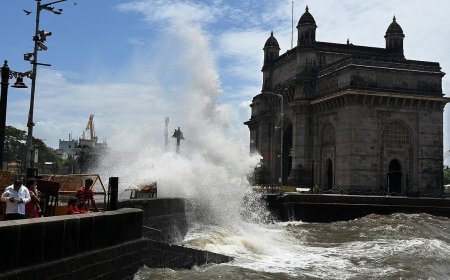New Delhi : India's Chandrayaan-3 moon mission has discovered a 160-km-wide moon crater near its landing site. The Pragyan rover, currently exploring the moon's surface in the South Pole region, discovered the new site from data sent back to Earth. The site, rich in material accumulated from past impacts, has been an area of interest for lunar exploration missions.
The Aitken basin contributed almost 1,400 meters of debris, while other smaller craters around the basin added more geological material to the landscape. Scientists believe the new 160-km wide crater was formed even before the formation of the Aitken basin, making it one of the oldest geological structures on the Moon's surface. Due to its age, the crater has been buried under debris generated by later impacts and has degraded over time. The rover's high-resolution images from its optical cameras reveal key details about the structure of the ancient crater, providing a rare scientific opportunity to study one of the earliest geological formations on the celestial body.
Chandrayaan-3 Moon Mission Discovers 160-km-Wide Crater

Mumbai Issues High Tide Alert as Waves Expected to...
Mumbai, December 4: The Brihanmumbai Municipal Corporation BMC has issued a high tide alert for Thursday...
Central Railway Announces Special Night Block Betw...
Mumbai: In a bid to enhance infrastructure and ensure safer train operations, the Central Railway has announced a special night block betw...
Balcony Slabs Collapse Again in Andheri’s P&T Gove...
Mumbai, September 30: In yet another alarming incident, two balcony slabs collapsed on Tuesday morning in the Postal and Telegraph P&...
Western Railway Announces 5-Hour Jumbo Block Betwe...
Mumbai, September 27, 2025: Western Railway has announced a five-hour Jumbo Block on Sunday, September 28, 2025, between Churchgate and Mu...
A Model for Sustainable Development in Vasai-Virar...
Vasai-Virar, 24 September 2025: In a landmark step towards environmental conservation and community welfare, the Vasai-Virar region is set to witness the planting of 1 la...
More Local News To You
Make every story matter—get news that resonates with you through your ABC Account.
End of Fast-Track Visa Program a Major Setback for Indian Students Heading to Canada
New Delhi: Canada has officially discontinued its fast-track Student D...
Border States on High Alert: Massive Mock Drills Set for Tomorrow
New Delhi, May 28 : In a significant move aimed at boosting emergency ...
Odisha Govt announces 12 days of Annual Menstrual Leave for female employees
Bhubaneswar : The Odisha government has issued a notification granting...



 Previous
Article
Previous
Article












